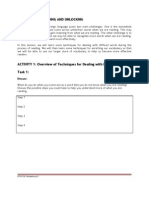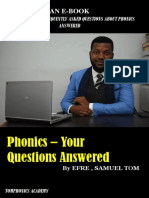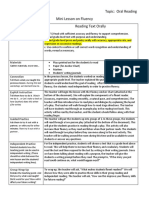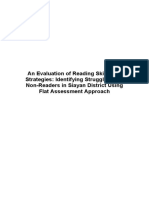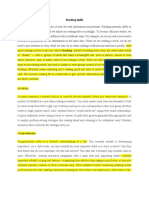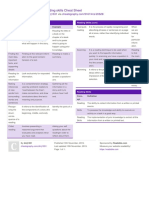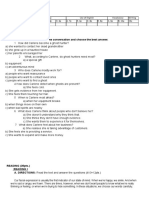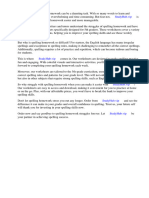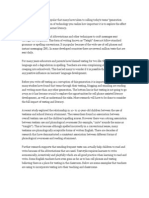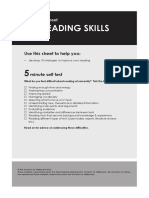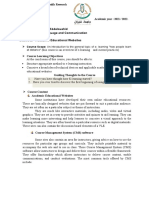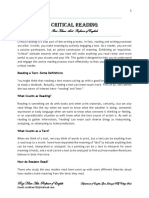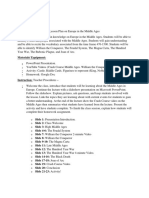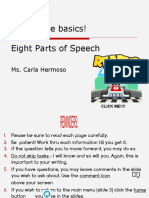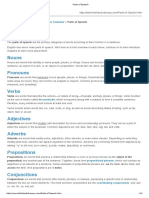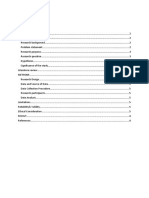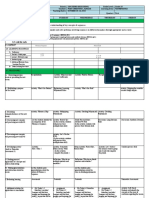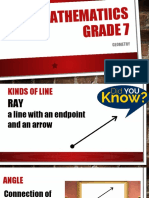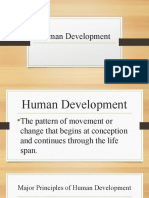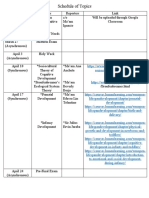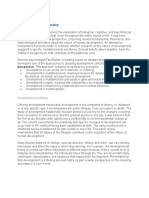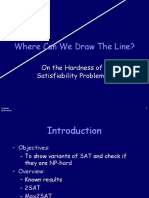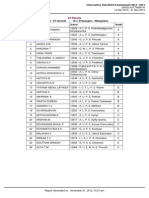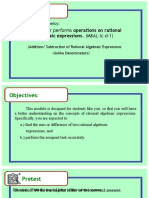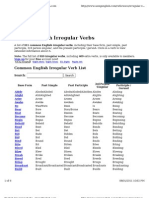0% found this document useful (0 votes)
196 views6 pagesReading Skills
Reading is a key language skill that involves using our eyes to interpret written symbols and our brain to understand words, sentences, and paragraphs. It is both a receptive skill, where we receive information, and a productive skill, where we can transmit information internally or aloud. There are different types of reading like skimming to get the main idea quickly, scanning to find specific information intensively, and critical reading to understand the author's message. Active reading requires surveying the text, asking questions, and reading critically to comprehend details. Developing reading skills involves decoding words, building fluency, improving vocabulary, understanding sentence structure, using background knowledge, and maintaining attention and working memory.
Uploaded by
Mary Christine IgnacioCopyright
© © All Rights Reserved
We take content rights seriously. If you suspect this is your content, claim it here.
Available Formats
Download as DOCX, PDF, TXT or read online on Scribd
0% found this document useful (0 votes)
196 views6 pagesReading Skills
Reading is a key language skill that involves using our eyes to interpret written symbols and our brain to understand words, sentences, and paragraphs. It is both a receptive skill, where we receive information, and a productive skill, where we can transmit information internally or aloud. There are different types of reading like skimming to get the main idea quickly, scanning to find specific information intensively, and critical reading to understand the author's message. Active reading requires surveying the text, asking questions, and reading critically to comprehend details. Developing reading skills involves decoding words, building fluency, improving vocabulary, understanding sentence structure, using background knowledge, and maintaining attention and working memory.
Uploaded by
Mary Christine IgnacioCopyright
© © All Rights Reserved
We take content rights seriously. If you suspect this is your content, claim it here.
Available Formats
Download as DOCX, PDF, TXT or read online on Scribd
/ 6



